How To Choose The Best Light Bulbs For Your Home
Picking the best light bulbs for your home is part science and part art, and it can have a significant impact on the atmosphere and mood in your home. Learn how to simplify the process so you choose the best light bulbs to use in each room of your home.
Once you choose the perfect new lamps or chandeliers for your home, it’s time to select the best lightbulbs to use in them. Believe it or not, using the proper light bulbs in each room (and each light fixture) can make a huge difference in the ambiance of your home.
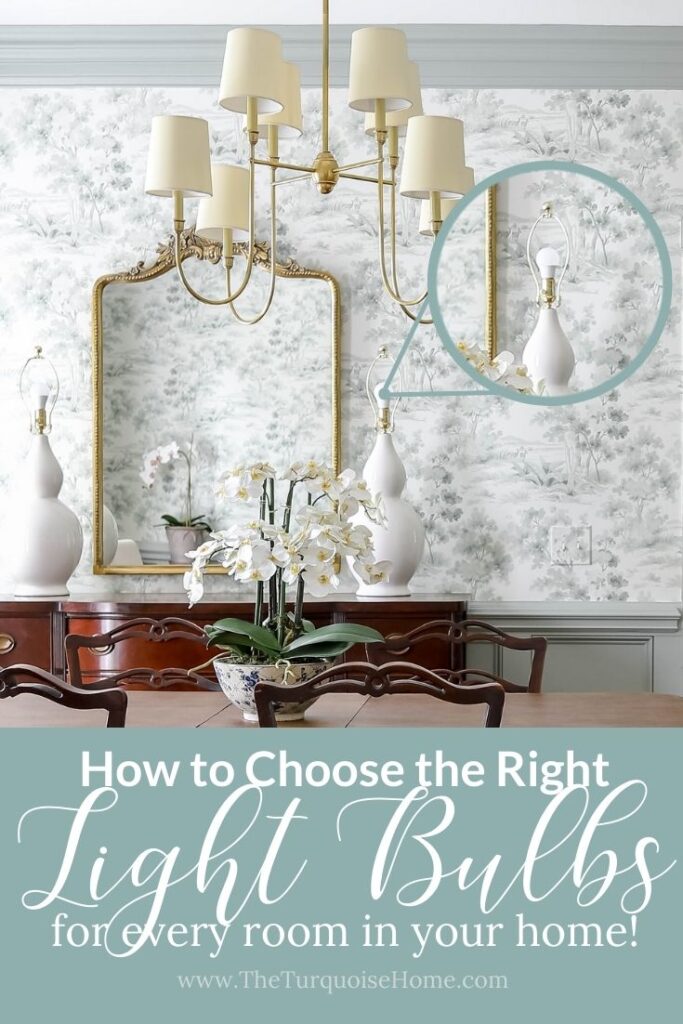
But if you’ve taken a trip to the store for lightbulbs in the last few years, you’ve probably noticed that the lighting industry has gone through a revolution. Traditional energy-wasting incandescent lightbulbs no longer dominate the lightbulb aisle, thanks to the invention of more energy-efficient LEDs and other options.
Remember when we used to go to the store with our old lightbulb in hand to make sure we found an exact match? Depending on how old your lightbulb is, finding a replacement may not be as straightforward these days!
So how do you choose the best lightbulbs for your home? The process involves just a little bit of science and some practical knowledge. And I’m going to break it all down to simplify it for you.
Because even though many of the new light bulbs have a watt-equivalent labeled on the packaging. It’s not quite apples to apples, so it requires more knowledge than just the watt-equivalent to get the right light bulb!
Let’s dive in and discover how to pick the best lightbulbs to use around your home to create the ambiance you crave. Because, believe it or not, the right lighting can make or break your space!
I love sharing my best tips and tools for DIY with you! I’ve shown you how to remove dry wall anchors and how to change a light fixture, as well as my top 5 tools for a beginner DIYer! I hope these help you create a home you love on a budget!
Lumens vs. Watts (vs. Kelvins)
Ok, the first thing we need to cover is the differences between lumens, watts, and Kelvins because that will help everything make sense as we go over light bulb options. This is that science bit I mentioned up above!
- Lumens – the total amount of light that a light source emits.
- Watts – the amount of energy a light source uses.
- Kelvins – indicates the color temperature of a light source.
Remember the old days of picking out your light bulbs based simply on the watts (usually 40, 60, or 100)? Although people thought the watts label referred to how bright the light bulb would shine, it actually indicated how much energy the bulb would consume.
With LEDs’ invention (and mass availability), bulbs that produce the same amount of light use far less energy (and have lower wattage numbers).
A simple formula to convert LED watts to incandescent watts is to multiply the LED wattage number times 5. For example, if you have an LED light bulb that uses 12 watts, it will produce the equivalent of 60 watts of light from an incandescent bulb.
However, the better number to pay attention to is the lumens measurement. Light bulbs in stores range from 450 to 2600 lumens, with the higher number indicating brighter light output.
Thankfully, manufacturers are helping us out by putting some of this information on product labels. You might see the label say something similar to “800 lumens” or “equivalent to a 60-watt incandescent bulb.”
Finally, Kelvins are a unit of measure for light’s color. Lower numbers (ex: 2000 Kelvin) indicate light that looks warmer (more yellow), while higher numbers (ex: 5000 Kelvin) indicate light that looks cooler (more blue). Product labels should also state the Kelvin rating for the bulb.
See? I told you there was science involved! 🙂
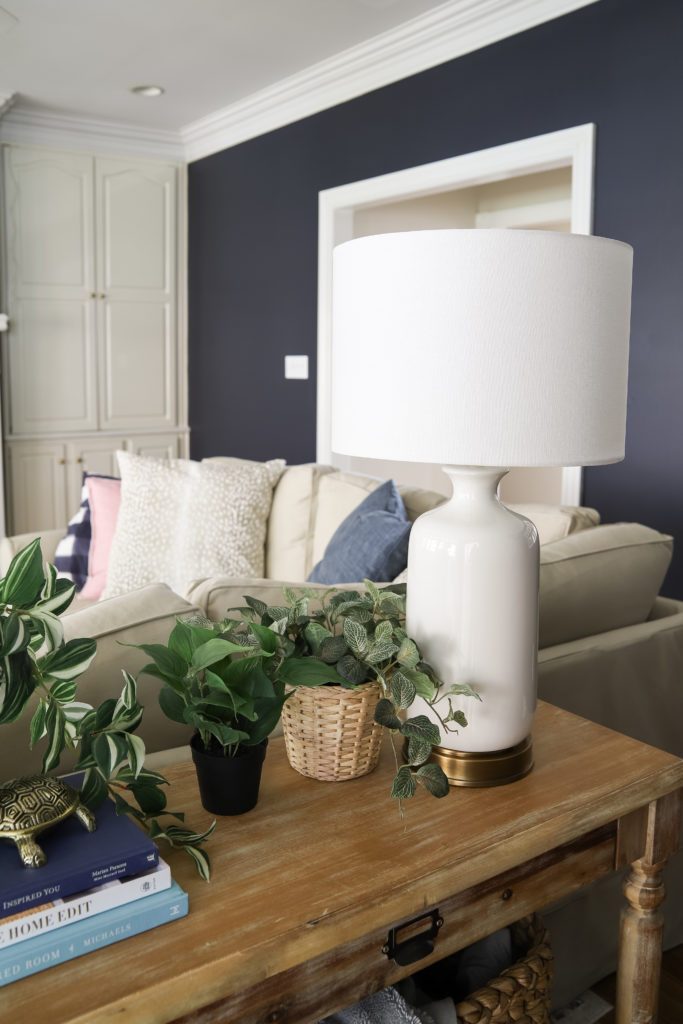
This post contains affiliate links for your convenience. See my full disclosure policy.
The Best Light Bulbs by Type (and Energy Consumption)
These days, you will find four common types of light bulbs available in the store: incandescent, compact fluorescent (CFL), light-emitting diode (LED), and halogen.
Incandescent Light Bulbs
These have long been the most commonly used light bulbs and are the least expensive to buy. They use a thin heated wire filament to give off a warm light, don’t contain mercury, and can be used with dimmers.
Although they used to be the industry standard, they are quickly becoming the “dinosaurs” because they aren’t as energy-efficient as other light bulbs and only last about a year before you need to replace them.
Since laws now require the production of more energy-efficient light bulbs, standard incandescent bulbs are being phased out. But, you can still find specialty options (ex: chandelier bulbs).
Compact Fluorescent (CFL Bulb)
These energy-efficient light bulbs contain mercury-based gas that lights up when energy flows through the bulb and heats the gas. Although they take a little time to warm up and get bright, they last longer than incandescent light bulbs and use much less energy and about 75% less heat.
Another plus is that once they burn out, you can recycle them by taking them to your local home improvement store. Be careful handling them because you can unintentionally expose yourself to mercury if they break.
Light-Emitting Diode (LED Bulb)
LED light bulbs are semiconductors that emit light when current flows through them, and the electrons release photons (light energy).
When it comes to energy efficiency, these are, by far, the best light bulbs. Although they are more expensive, they are quickly becoming the most common light bulbs used in homes for several reasons.
- The most energy-efficient (use 75% less energy).
- Don’t contain mercury.
- Emit bright light.
- Don’t give off heat.
- Last 25 times longer than incandescent bulbs.
Halogen
Halogen light bulbs are a mixed bag of pros and cons. They use a heated filament similar to incandescents, get very hot, and have the shortest lifespan. However, they are also energy-efficient, dimmable, and emit a bright daylight white light.
If you’re searching for the best light bulbs for your home, these are not a great choice. They work great as an outdoor light or a workshop light, though.
Choosing the Best Light Bulbs by Shape
You can find many different shapes and styles of light bulbs to fit your lighting needs. The best light bulbs will have a base that fits your fixture and a bulb shape that complements your decor. While the shape of the bulb inside your lampshade may not matter visually as much, it will matter in your chandelier.
If you’re replacing a broken bulb, take your old bulb with you to the store to find the correct replacement option.
Shop My Favorite Light Bulbs I Use in My Home:
How to Choose the Best Light Bulbs for Home by Room
First, think about how you use the space. For example, your living room is a place for relaxing, which means you may not want bright lights glaring in your face. The kitchen, on the other hand, is a workspace where you want to fill the room with light so you can see clearly.
In addition to the brightness, think about the lighting color. Bulbs with lower Kelvins give off softer, moodier light that’s best for the room’s atmosphere. However, bulbs with higher Kelvins emit cool, bright light that’s best for tasks.
I find that 3000 Kelvins (neutral color) works well throughout my house, and I vary the lumens based on the room’s lighting needs. Keeping the Kelvin ratings the same throughout the house helps create a cohesive ambiance for your home.
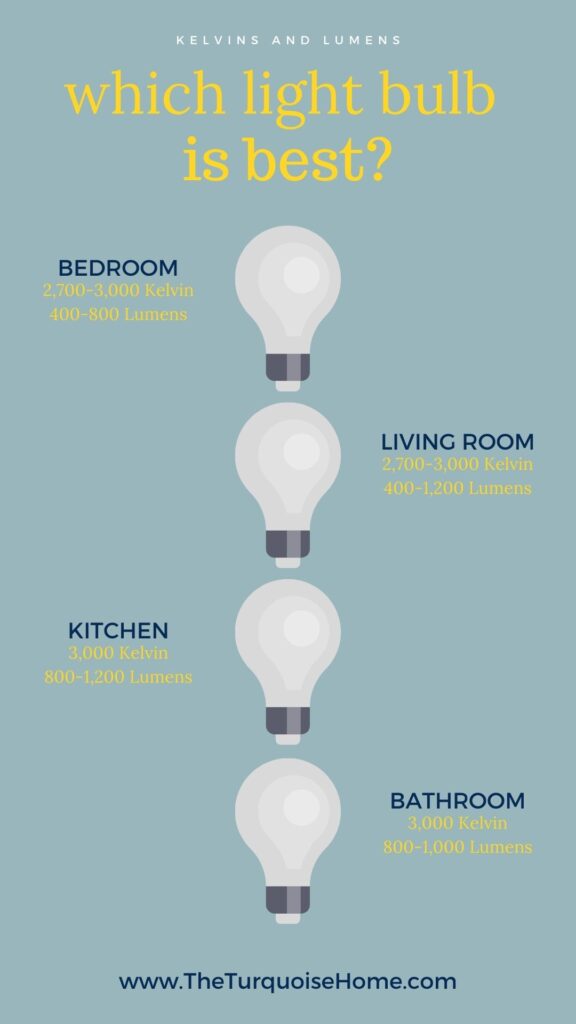
The Best Light Bulbs for the Kitchen
Since the kitchen is the heart of the home and a heavy-duty workspace, you’ll want bright lighting and multiple light fixtures in that room. I recommend aiming for 800 – 1,200 lumens in this space.
This all depends on the natural light in a kitchen, too. Go brighter on the lumens (higher) if you don’t have much natural light or do a lot of cooking after dark.
I use these can lights in my kitchen and these candelabra light bulbs in my chandelier.
The Best Light Bulbs for the Bedroom
Keep the lighting in bedrooms a soft white light to promote rest and aid with falling asleep easier. Sticking to 800 or less lumens is a good general rule of thumb in the bedroom. You can even lower the Kelvins to 2700. These are great light bulbs for bedrooms.
However, if you read or have kids that do homework in their rooms, you may want to include task lighting that’s a little brighter, like in a desk lamp.
The Best Light Bulbs for the Bathroom
I like to have my bathroom lighting brighter than my bedroom lighting to easily see well enough to brush my teeth and do other tasks. I recommend 800 – 1,000 lumens in the bathroom.
However, I also prefer having a dimmer switch in my bathrooms so that when we use the restroom in the middle of the night it isn’t so glaring!
The Best Light Bulbs for the Living Room
The living room is a space that’s lighting needs will vary based on how you use it. I recommend a range of 400-1,200 lumens.
If your living room has high, vaulted ceilings and you entertain frequently, you may opt to light it at around 1,000 lumens. However, if you primarily use the area for relaxing and watching TV, you’ll want something like 750 lumens or less.
The Best Smart Light Bulbs
The beauty of a smart light bulb is that is can change the color and brightness from an app on your phone! But the downside is that they can be pricy.
I’ve used and loved the Philips Hue smart bulbs. I have them in my living room lamps and bedroom lamps for the perfectly controlled color and brightness. They also can turn on and off on a scheduled. But, again, they are pricier and require a smart hub to communicate between the app and the bulb.
I was initially concerned that they bulbs would burn out quickly, but they have all lasted more than 6 years and still going strong. So, I’m happy with their longevity!
Another option, that I love, is to use a smart plug instead of a smart bulb. While a smart plug will not allow you to change the color or brightness of the bulb (so choose the right one), it will allow you to set a schedule for when the lights turns on and off. And you’ll be able to create a schedule for it.
I have used and loved this smart plug for all of the lamps in my home.
Final Thoughts
Ultimately, to choose the best light bulbs for your home, you need to consider several factors. Your light fixtures, type of light bulbs, lamp shades, light color temperature, and how you use the space all play a part.
You’ll also notice that your paint colors may change in hue simply by swapping out a lightbulb!
In general, I stick with 400-800 lumens in most rooms on my home. I use less lumens in the living room and bedrooms, and more lumens in the kitchen and bathrooms!
Feel free to experiment with your lighting by changing the Kelvin and lumens levels until you reach the lighting levels that create the perfect balance between ambiance and task lighting.
More Posts You Will Love:

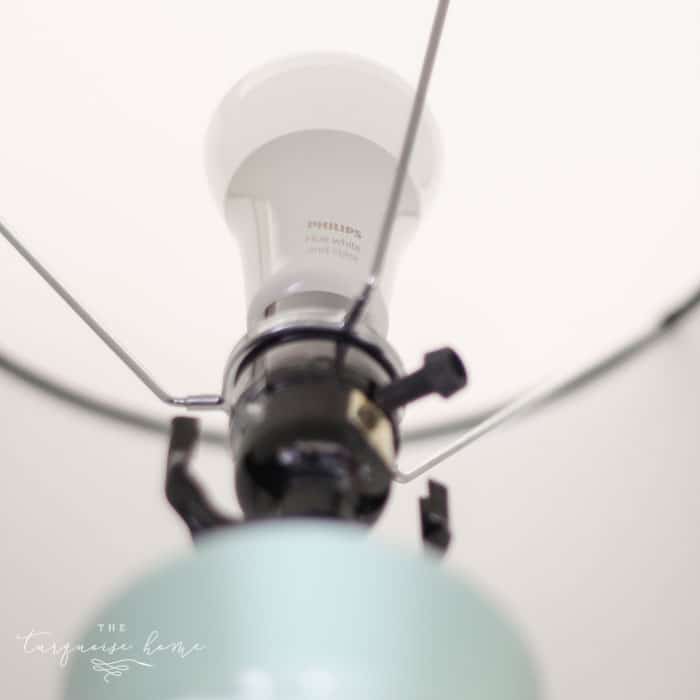

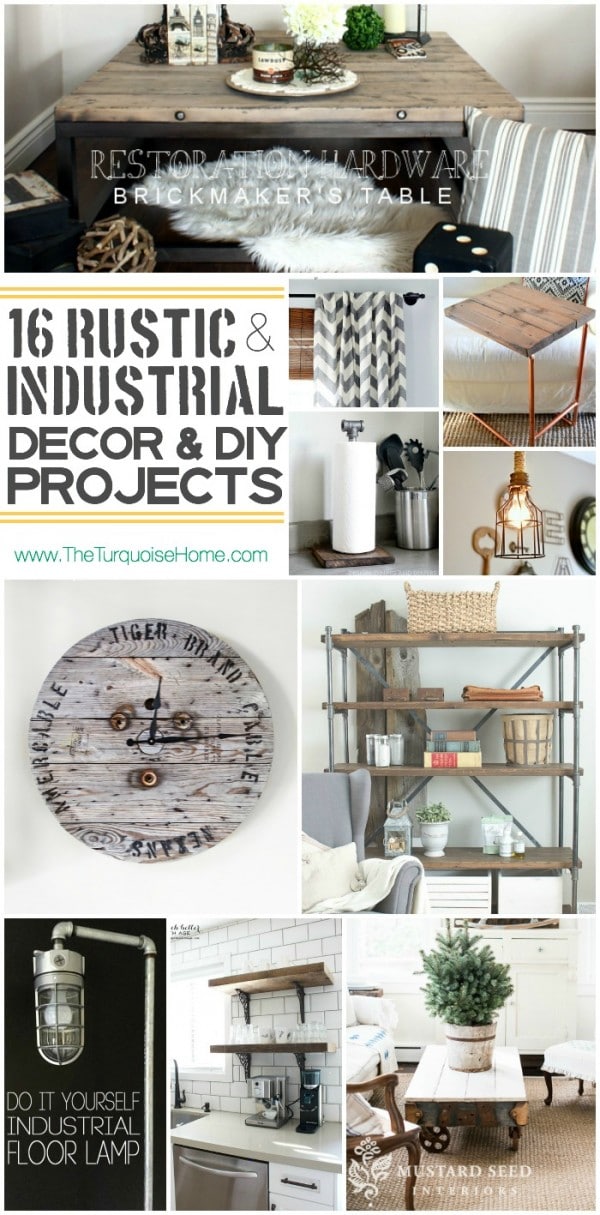
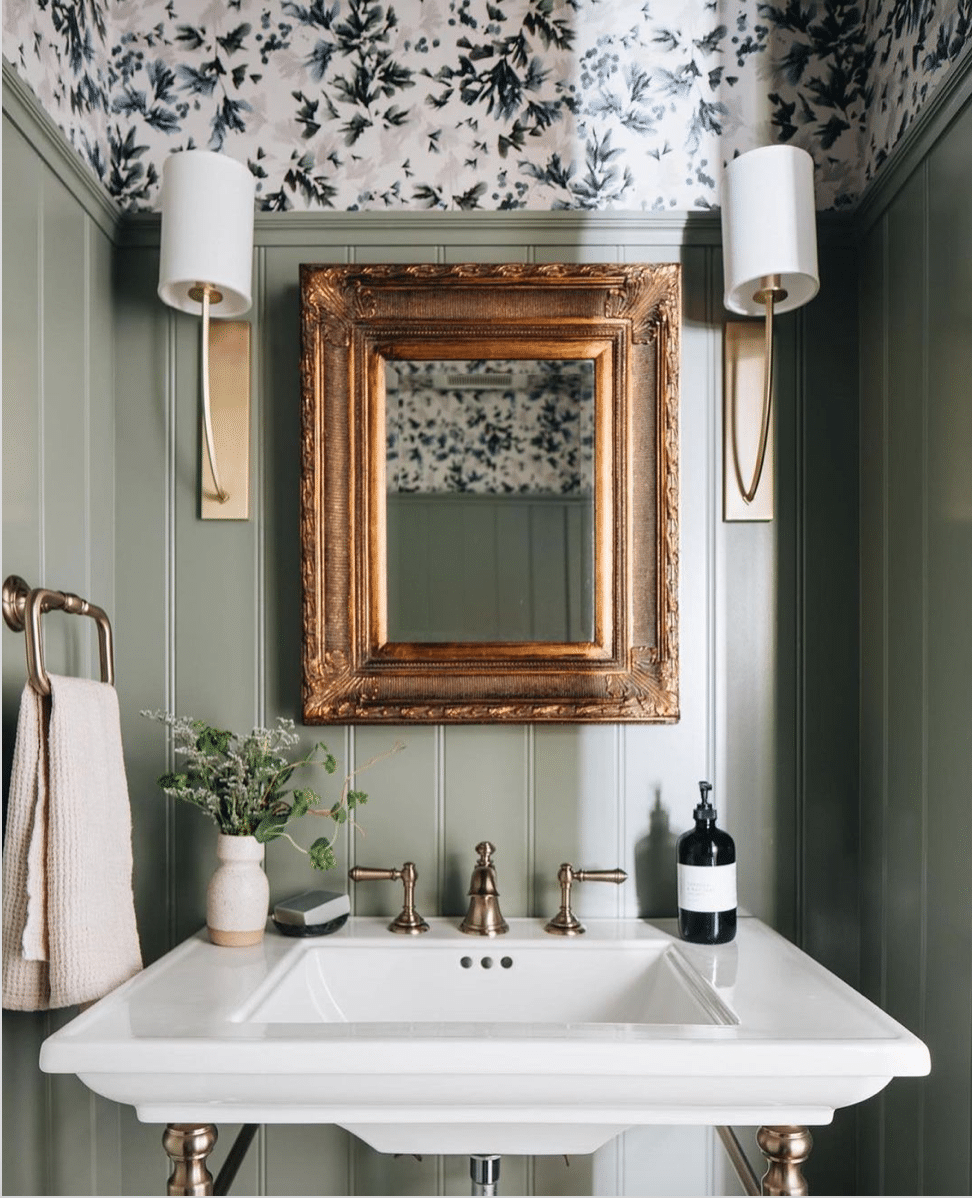
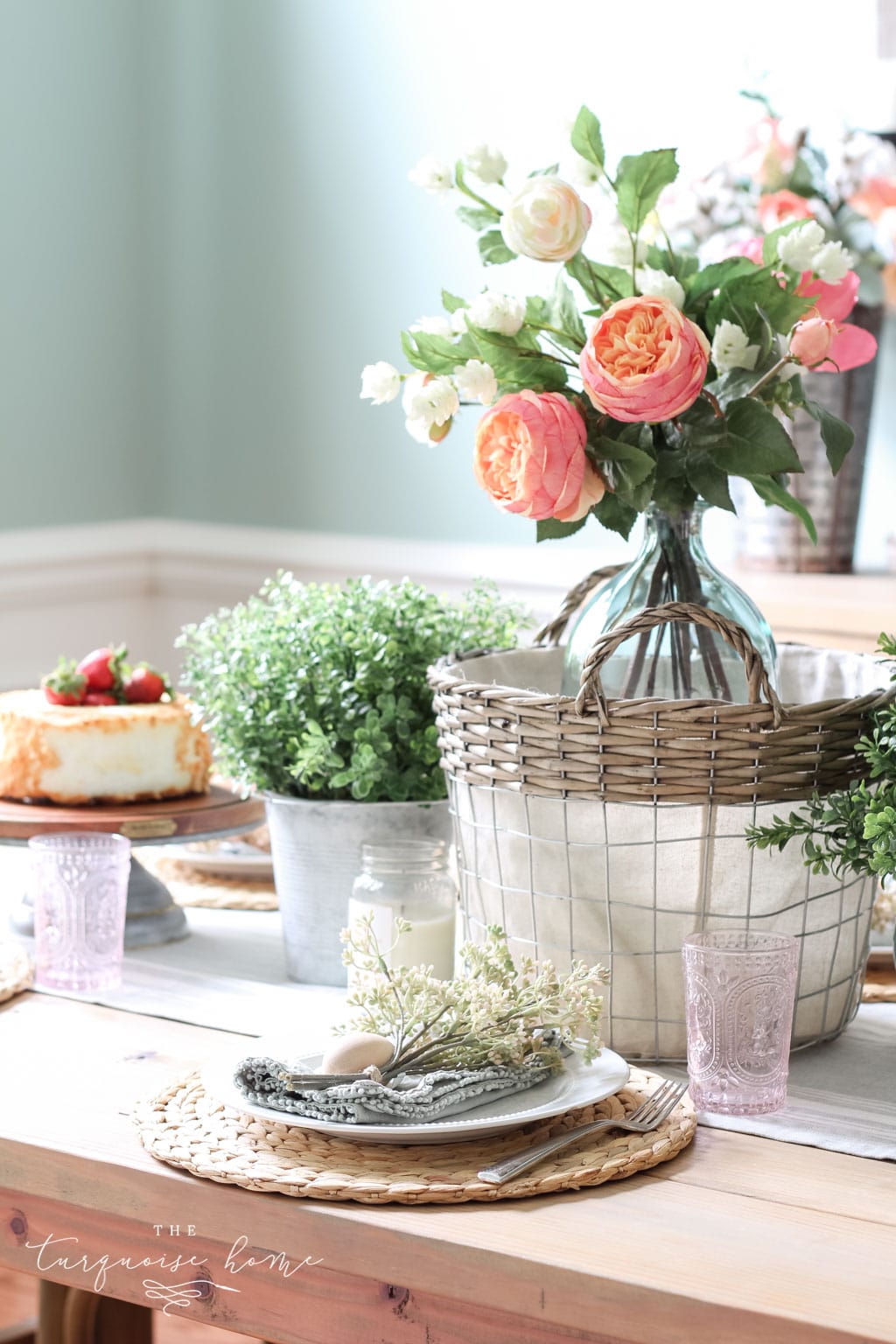
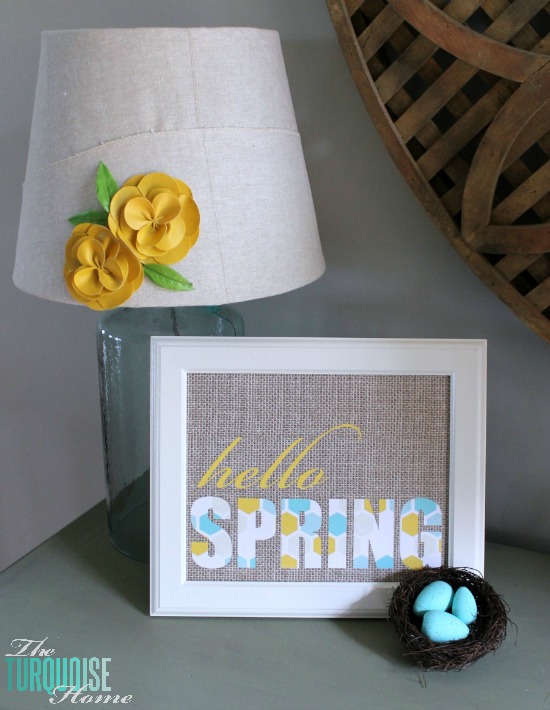
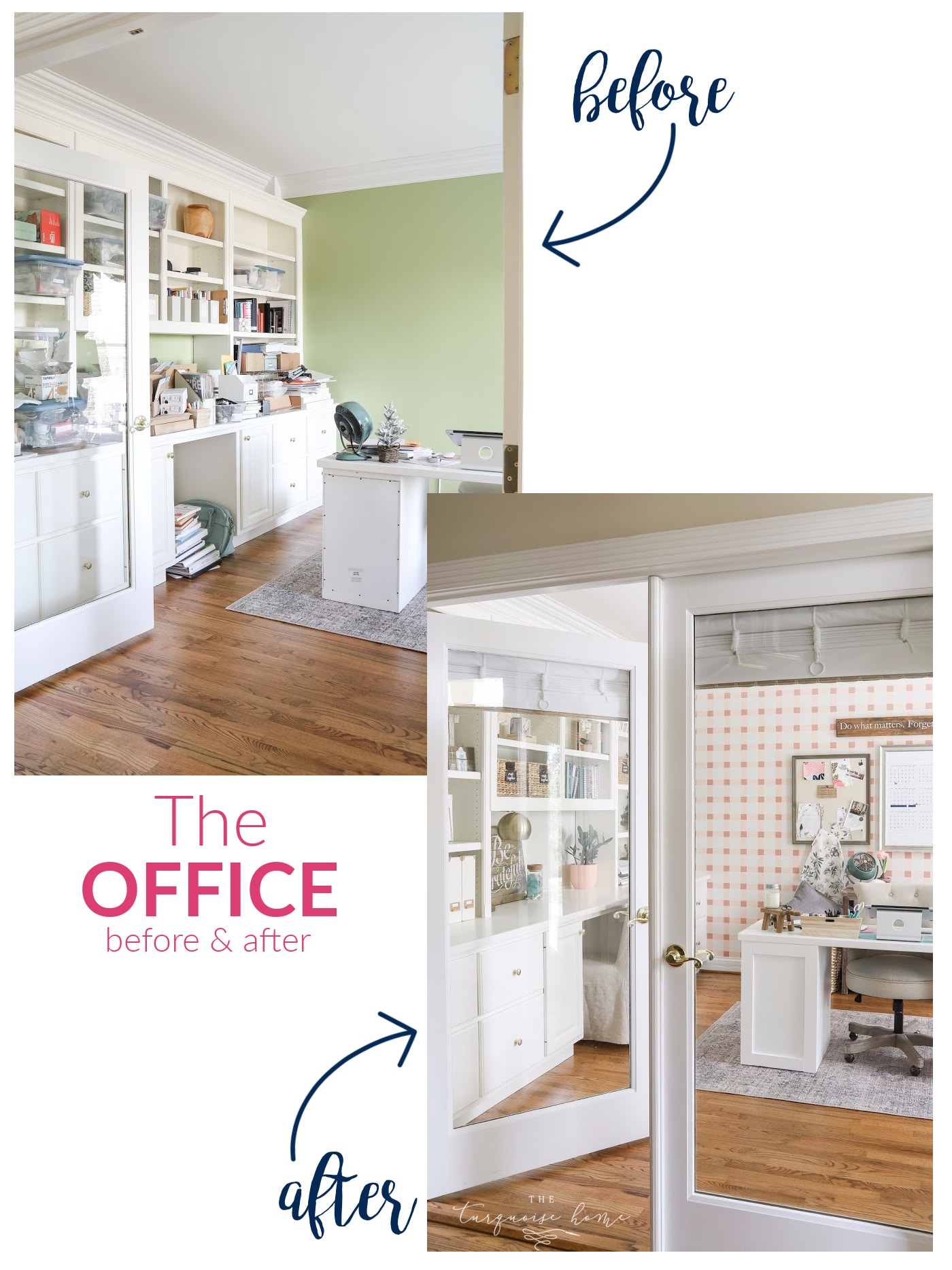
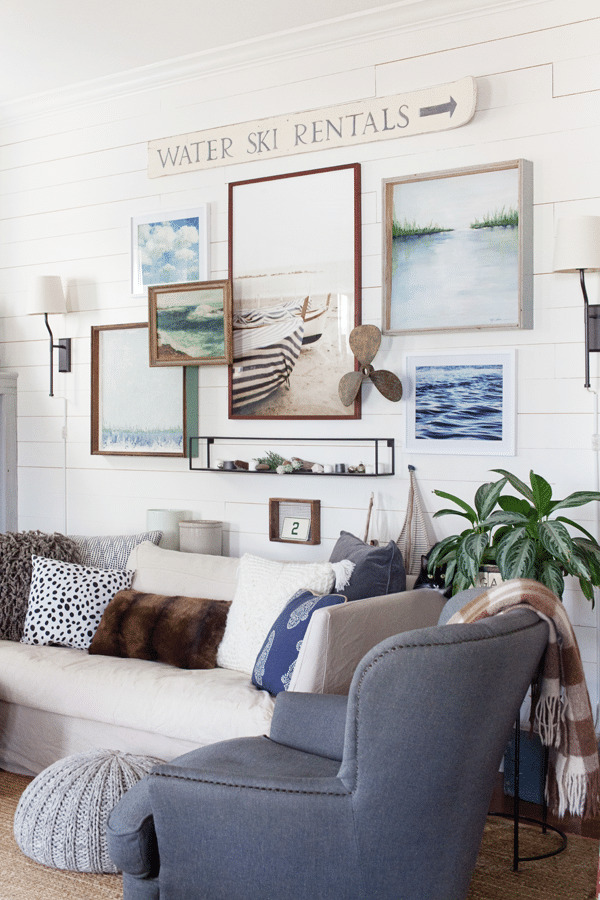
This was so helpful, thank you! What do you recommend for a dining room? We have a dimmer (needs fixed, but we have it, haha), so I think that’s an added benefit. Thanks again!
Hi Lacy, I would do lighting similar to what I suggest for a living room in the dining room. So, 2,700-3,000 kelvin and 400-1,200 lumens. But I’d probably err on the lesser side in the dining room since I like a candlelight vibe there. I actually prefer lamp light and candle light in an dining room or an overhead light on a dimmer. But I’d go on the higher side for an eat-in kitchen area. That’s less for hosting and more for everyday. I hope that helps!
What is the brightest bulb i can use for my outdoor porch and outdoor garage lights ? My neighbors lights appear much brighter than mine.
Any suggestions?
This was very helpful. I knew the change from incandescent to LED definitely confused me, but choosing the right bulb has always been a challenge. I have a closet shelf full of the wrong bulbs that I hope might work for some light fixture, lamp, or room in the future! Your information and suggestions will help me avoid future wrong bulb purchases and set the right mood for the right room. Thanks!
You’re so welcome! I’m glad it was helpful! xo, Laura
Much needed info. Thanks for sharing! I have asked for assistance in the lighting areas of our Home Improvement Stores and usually get a young associate that really only knows two things about light bulbs. How to turn on & how to turn off (that’s debatable in my home) and just end up grabbing the same old bulbs I’ve used my whole life. With this information I feel better informed and now more confident about updating my home’s lighting.
This is a great post! We built a house a few years ago and I still remember the electrician sending me to the store to get bulbs for him (we live in a rural area) and it was so overwhelming! Thanks for sharing! I especially appreciate the basic chart for each room. The color/Kelvin rating definitely makes a difference! I’m pretty sure our recessed lights have an internal switch with three different settings that allows for changing the warmth based on the room where they are used. I had never had recessed lights in my life and didn’t even know that was a thing!
I’m so glad this was helpful, Vicki! It can be super overwhelming. That’s why I’m glad I have found my favorite light bulbs on Amazon, and I just reorder as needed. No standing in front of the wall of light bulbs ever again (I hope)!